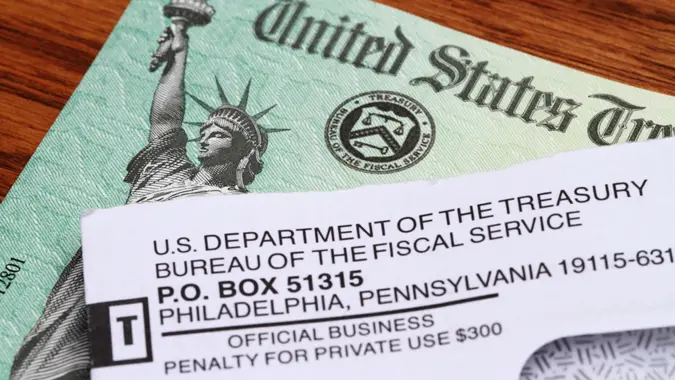Average Social Security Payment in June 2025 Will Surpass a Major Milestone: How Does Yours Stack Up?

Commitment to Our Readers
GOBankingRates' editorial team is committed to bringing you unbiased reviews and information. We use data-driven methodologies to evaluate financial products and services - our reviews and ratings are not influenced by advertisers. You can read more about our editorial guidelines and our products and services review methodology.

20 Years
Helping You Live Richer

Reviewed
by Experts

Trusted by
Millions of Readers
For the first time in the history of the Social Security Administration, the average monthly benefit check for a retiree is set to pass $2,000 in June.
While that’s good news on the surface, there are some other factors that may not have every recipient celebrating this major milestone.
About the $2K Average
For those receiving Social Security benefits, the news of the payment milestone may be a reason to celebrate. Based on the Social Security Monthly Statistical Snapshot, the average check hit $1,999.97 in April. That puts it on track to pass the $2,000 threshold in June, based on projections.
However, some recipients have been concerned about seeing smaller checks over threats from President Donald Trump about federal student loan garnishments. It’s an issue impacting many people. In fact, according to the Consumer Financial Protection Bureau, there are 450,000 federal student loan borrowers 62 years and older who are in default of their student loans and probably receiving Social Security benefits.
Money Concerns for Recipients
If you receive a Social Security payment, you may be wondering why yours doesn’t stack up to the $2,000 milestone or doesn’t seem to be enough to get by today. Per USA Today, even though monthly payouts continue to climb, they’ve been going up at a far slower rate than the pressures of inflation pushing on retirees for years.
If you find yourself struggling to pay for things, some basic personal finance guidance may be a good starting place. For example, it may be helpful to create a budget after you list out your monthly expenses. You can see where the money is going and look for ways to cut back, perhaps canceling unnecessary subscriptions or looking at steps to reduce your food bill.
It might also be time to take on a side gig or part-time work if you’re really struggling with the amount you get. If you go this route, you will want to check if and how working would impact your benefits. As always, do your research or speak with a financial advisor before making any major money decisions.
 Written by
Written by  Edited by
Edited by 

























